When Kids Played With Alligators in Los Angeles
Babies, dogs and onlookers mixed with snapping reptiles at California’s Alligator Farm
In Los Angeles, eccentric residents aren't difficult to find. (Angelyne, anybody?) Few stand out as much as "Alligator Joe" Campbell and Francis Earnest, the exceptionally unique Angelenos who ran an alligator farm in the early 20th century.
At the California Alligator Farm, which operated in the Lincoln Heights neighborhood of Los Angeles between 1907 and 1953, visitors forked over a quarter to see more than 1,000 gators of all sizes and ages. The farm had 20 ponds for the trained alligators, Cecilia Rasmussen writes for The Los Angeles Times, and the animals performed daily in front of large crowds.
A 1910 article by Arthur Inkersley in Overland Monthly describes how the alligators were captured, how the eggs were incubated and even how the animals exercised. "With a strong line and a big steel nook baited with pork, it is as easy to catch an alligator as to catch a trout with a minnow," Inkersley wrote, "but you must know what to do with your alligator when you have caught him." Tiny alligators were reportedly sold to park guests, who would also pay to ride them, watch them ride down slides, feed on live chickens and wrestle with people.
Despite signs admonishing visitors not to "throw stones at the alligators, spit on, punch or molest them in any way," adults and children regularly handled alligators at the farm. Some were even stolen by college pranksters.
Campbell and Earnest were among of a group of intrepid American impresarios who brought dangerous attractions to the masses. In a time before strict labor laws, animal protection codes and child safety restrictions, roadside zoos and animal exhibitions were severely unregulated. Next door to the California Alligator Zoo, movie mogul William Selig built his own private menagerie that attracted 300,000 visitors a year.
Eventually, visitors to the Alligator Farm dwindled, so it was moved to nearby Buena Vista and then to Florida. Though it's been a half-century since alligators roamed the neighborhoods of Los Angeles, perhaps the unbridled, over-the-top, rules-be-damned spirit of the bizarre park lives on within the city itself.
(h/t Messy Nessy Chic)
/https://tf-cmsv2-smithsonianmag-media.s3.amazonaws.com/accounts/headshot/erin.png)
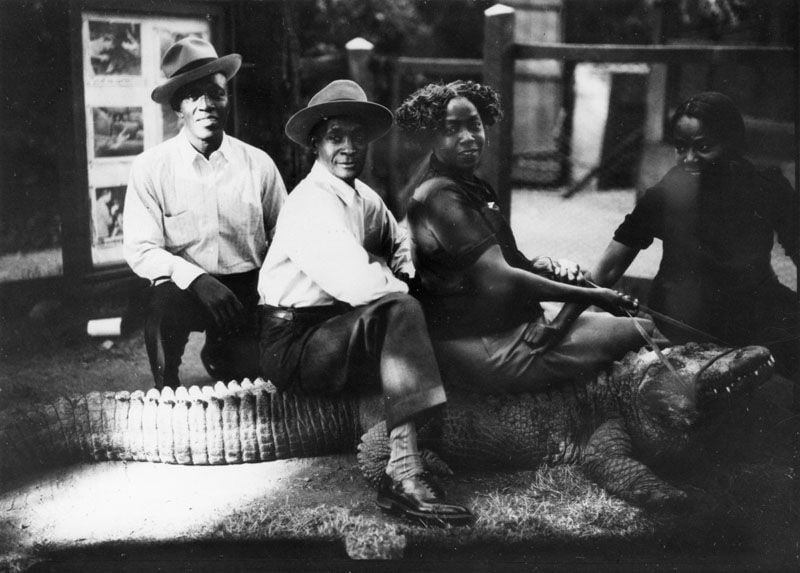
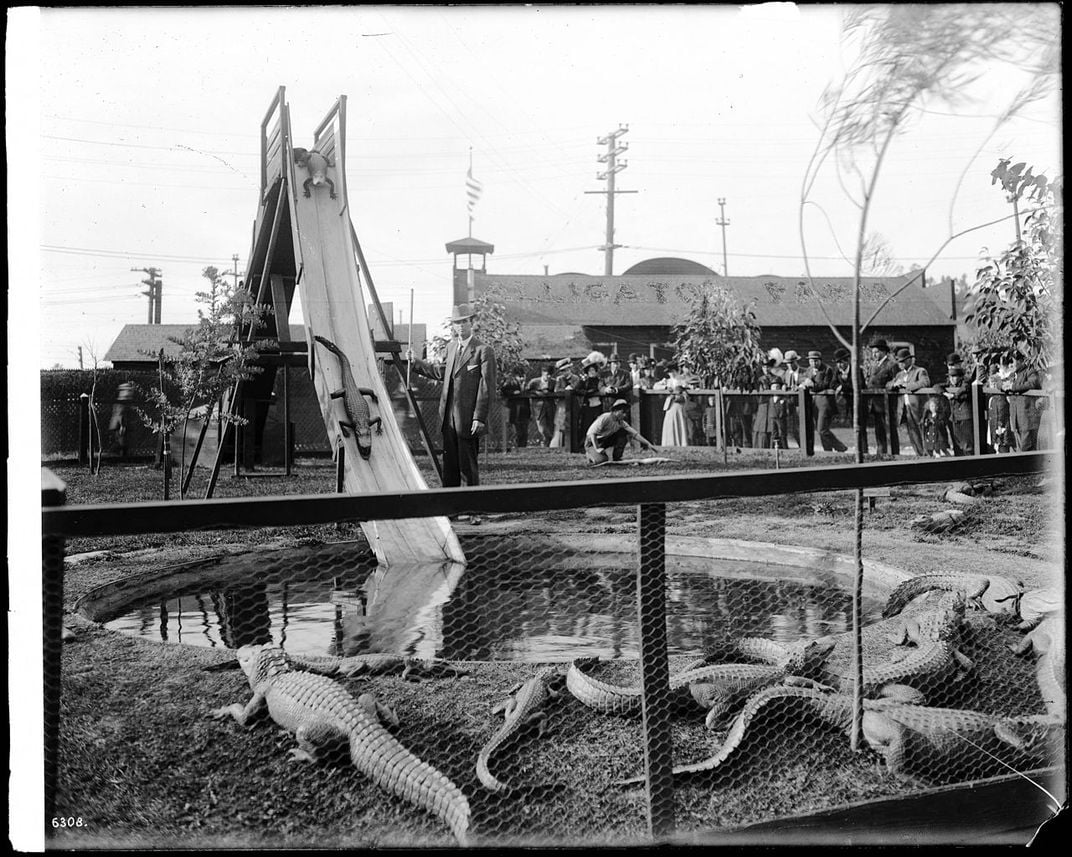
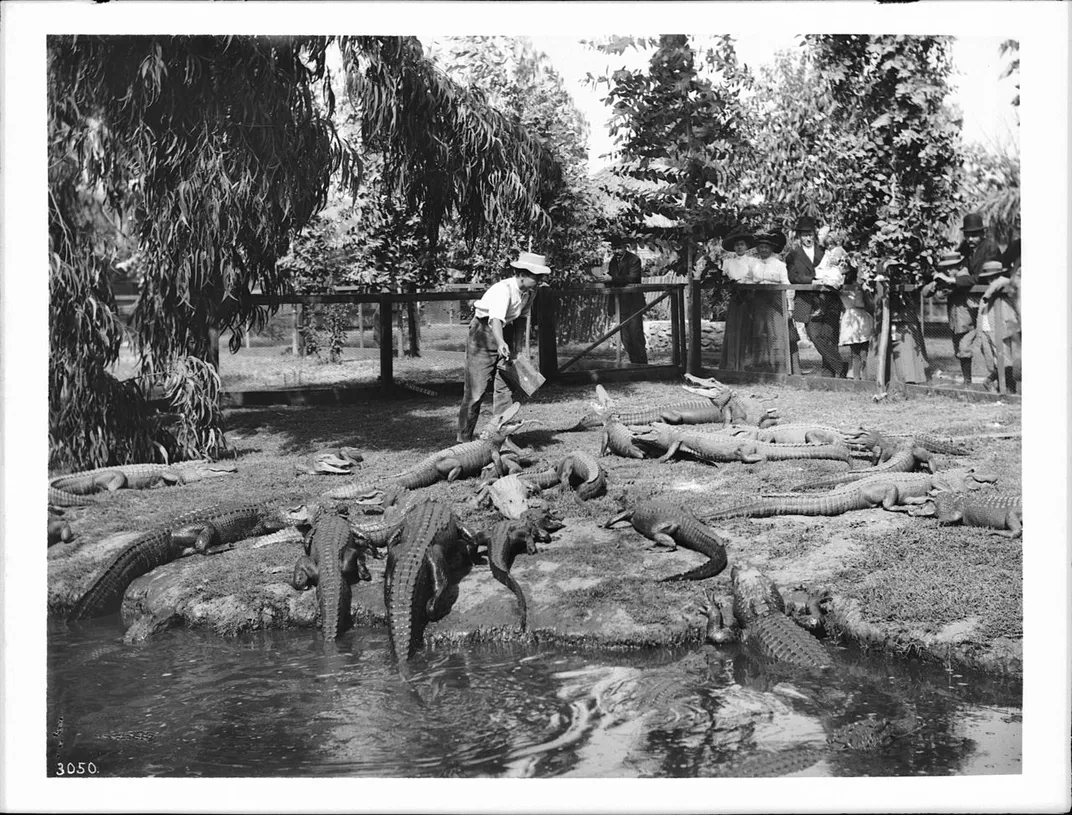
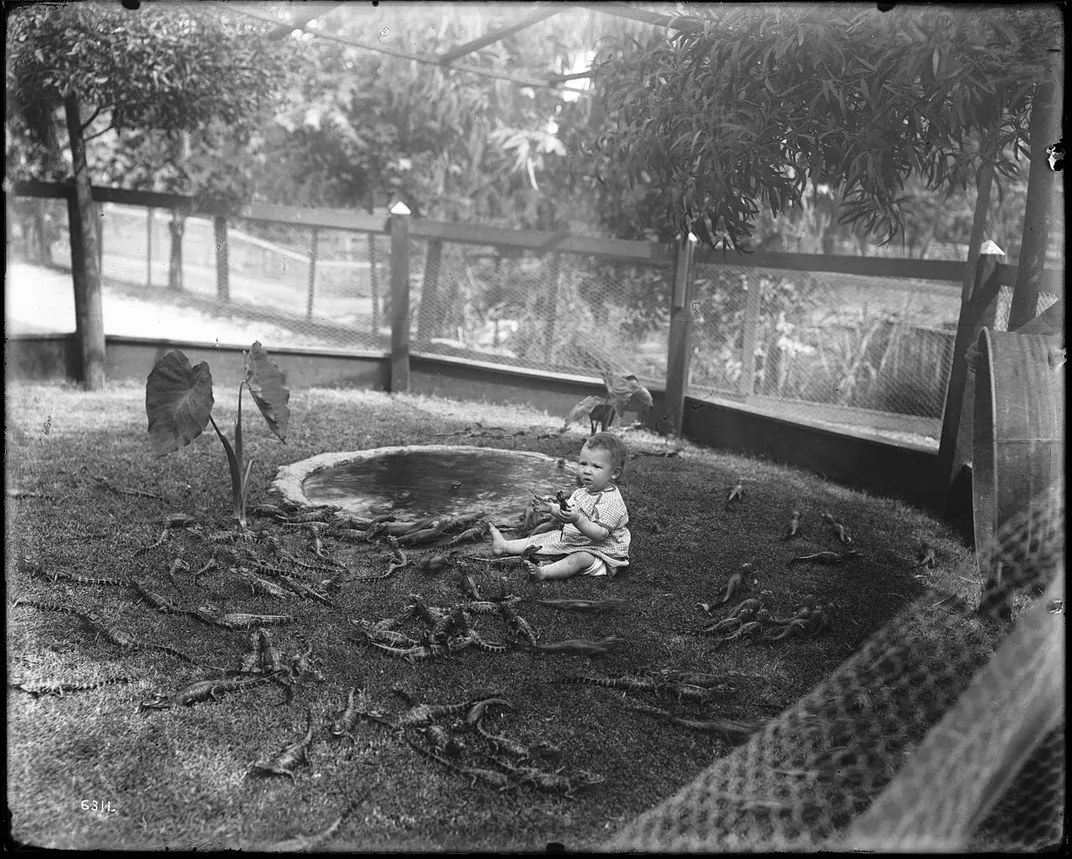
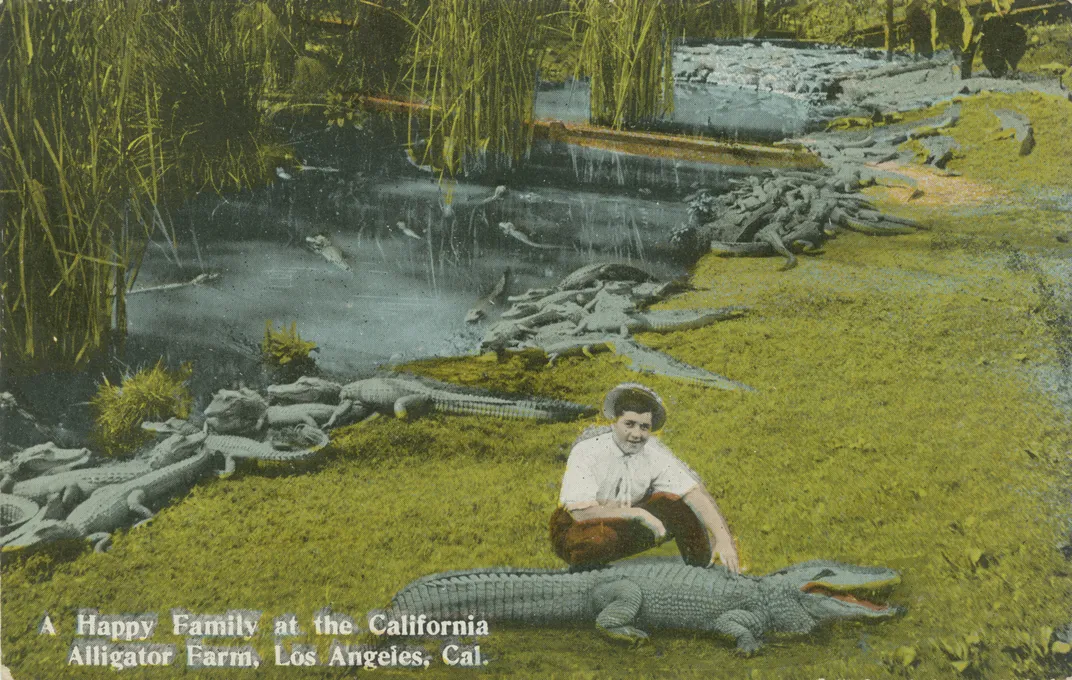
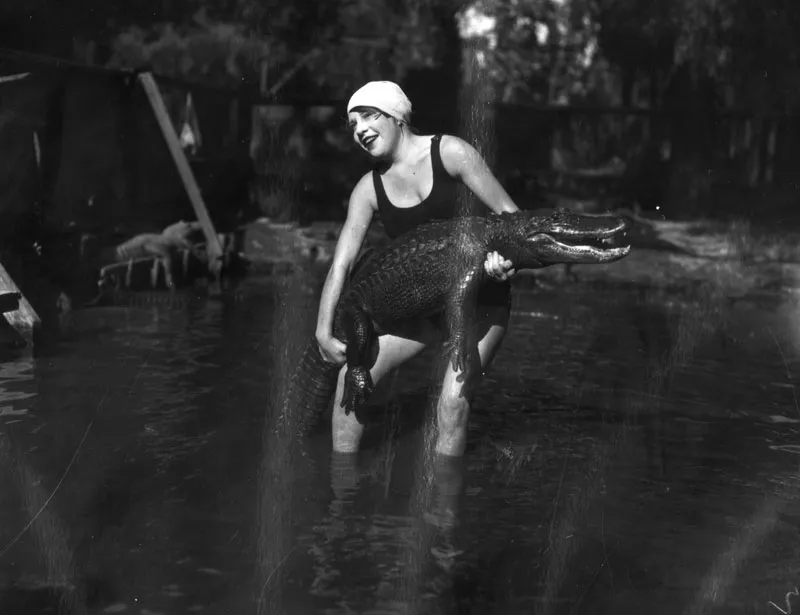
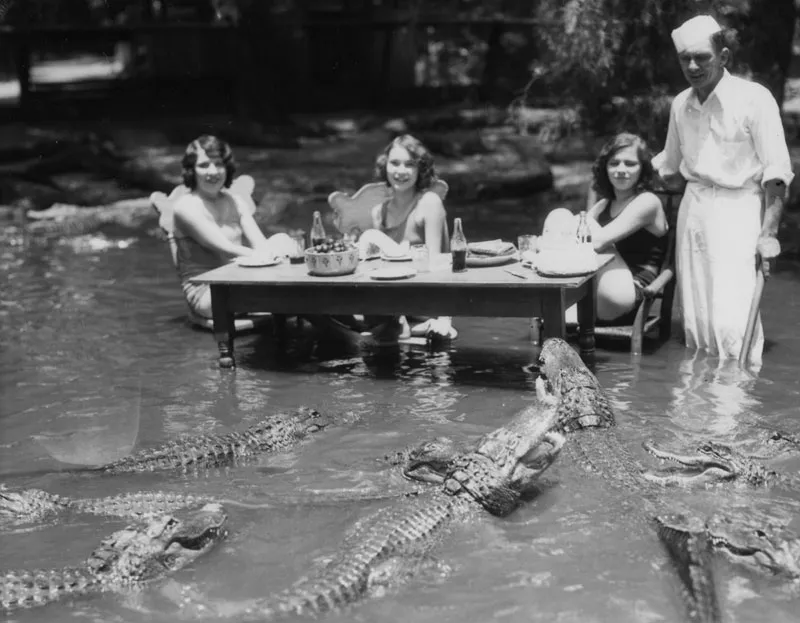
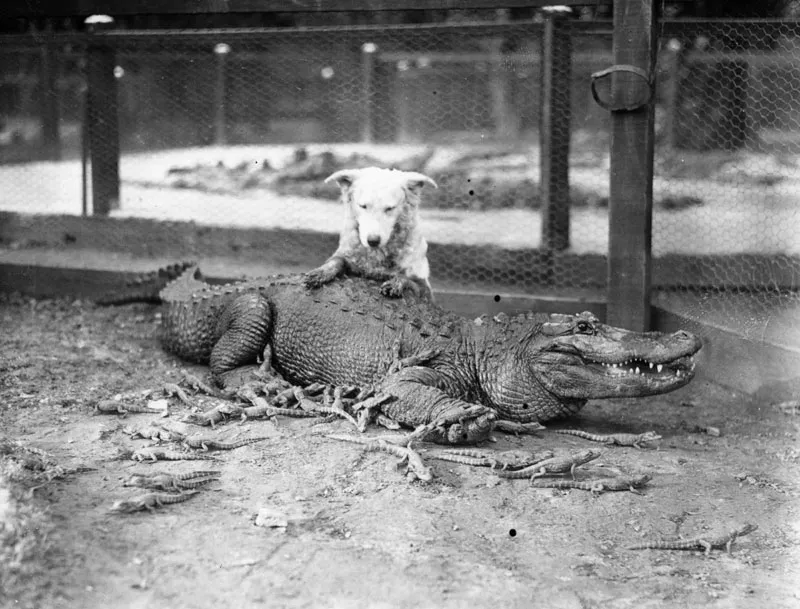
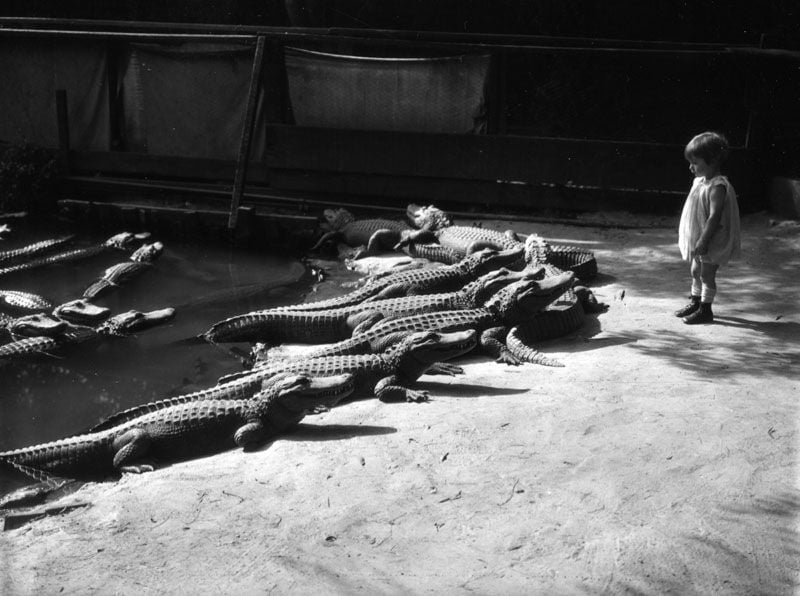
/https://tf-cmsv2-smithsonianmag-media.s3.amazonaws.com/accounts/headshot/erin.png)